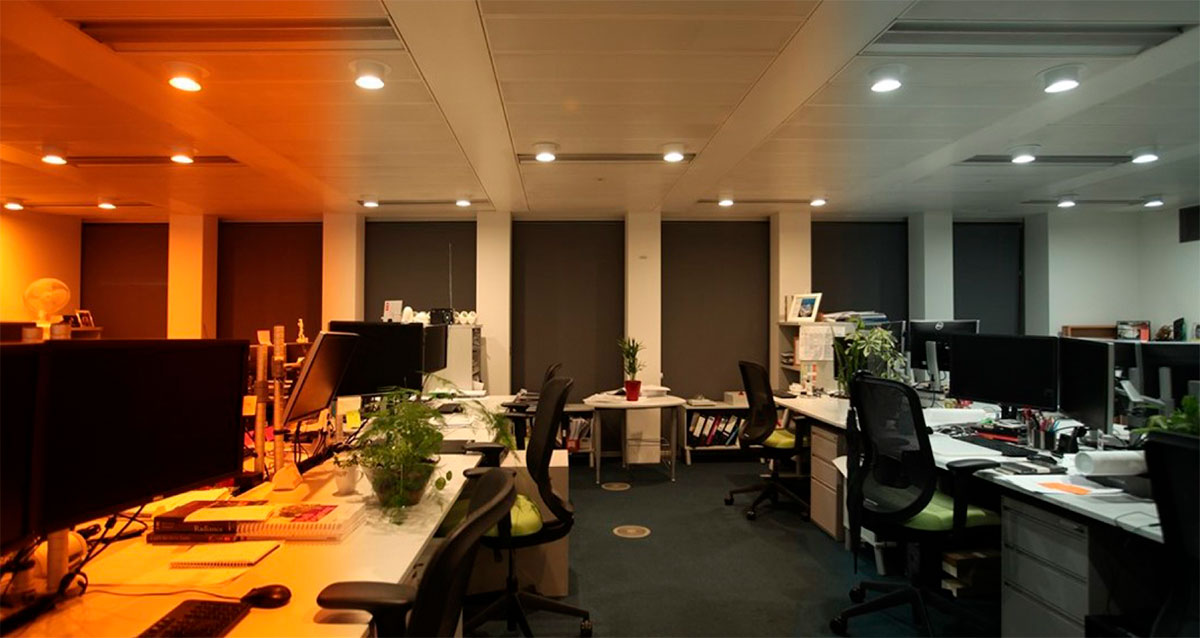Project Description
The effects of light on health, mood, and performance in ARUP offices.
In this pilot installation, and for the first time to our knowledge, we investigate the effects that a dynamic spectrally tunable lighting system that mimics daylight has in the subjects under study compared to a traditional lighting system made of fluorescent lights. Within this work assessment of alertness, mood, sleep quality, performance, mental effort, headache, and eye strain through a 9-weeks intervention using subjective and objective measurements in offices were done.
This pilot project, prototype installation and subsequent experiment is part of the European Union’s Horizon 2020 Elliot research project: www.ledmotive.com/elliot The experiment was held in ARUP London headquarter. The installation and the study was scientifically oriented and several neuroscientists were involved to build a theoretical framework concerning the interaction between the light spectral composition and human physiology.

Picture of the office combining three different light conditions with the LEDMOTIVE’s spectrally tunable lighting system installed
In addition, the non-visual effects of light such as effects on mood, quality of sleep, general alertness and hormone secretion were investigated to understand the non-visual effects of different types of light (lights of different wavelengths), using our spectrally-tunable lighting technology that allows advanced control of light spectra for office workers. The scientific aim was to understand how the non-visual responses to light interact with time of day and type of work performed and to understand ultimately how these contribute to people’s everyday health, emotions and behavior. You can read more about the aims of the experiment and the methodology followed in this CIE publication. http://files.cie.co.at/x046_2019/x046-PP29.pdf
Human Centric Lighting
Sunlight changes in light intensity and spectral composition partly define the circadian cycle of living beings. The scientific evidence on the relation of light and the synchronization of our circadian system is unequivocal, as are the risks that a disrupted circadian system can pose to our health. Can you imagine a bright future were smart light engines dynamically adapt their spectral output to match our needs? We do.
